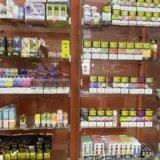With state and local governments having received billions of dollars in recent years from settlements of lawsuits against pharmaceutical companies that sell opioids, a group of doctors argues in a new position paper that overdose prevention centers (OPCs)—facilities where people can more safely use illegal drugs in a medically supervised environment and be connected to a host of other services—”represent a wise, cost-effective, and necessary use of these funds.”
The centers can “save lives, improve public health and advance racial equity,” the paper says.
In Europe, says the advocacy group Doctors for Drug Policy Reform (D4DPR), OPCs have been safely operating for almost four decades, while they’ve existed in North America since 2003.
“These sites have reduced overdose morbidity and mortality, improved injection safety, and increased access to addiction treatment without raising crime rates,” the paper says, adding: “For many individuals who use drugs, these centers are often the only places where they are treated with dignity and respect.”
For people who might otherwise use drugs in isolation, “OPCs provide a safe, hygienic, and dignified space where individuals can bring their own drugs that they consume under the supervision of medical professionals or specially trained staff,” the group notes. If an overdose does occur, “staff respond immediately, utilizing oxygen, medications, and other life-saving interventions as necessary.”
Beyond that, OPCs “also offer food, showers, laundry facilities, clothing, and comfortable places to rest after drug use,” in addition to a variety of other services, which “may include wound care, provision of naloxone and safe injecting supplies, primary medical care, drug testing, mental health treatment and referrals, counseling, immunizations, HIV Pre-exposure Prophylaxis (PrEP) and Pre-exposure Prophylaxis (PEP), and sexually transmitted disease (STI) testing and treatment. Many OPCs also provide onsite detox services, social service referrals, such as housing vouchers or shelters, assistance in applying for Medicaid, and legal assistance.”
Importantly, the facilities also build relationships and provide off-ramps for people trying to slow or stop their drug use—resources that often aren’t available to people who are arrested and jailed for illegal substances.
“OPC participants who wish to stop or decrease their drug use can either meet with a prescribing medical professional on-site or virtually to initiate opioid agonist therapy,” the D4DPR report says.
Meanwhile, over the next 20 years, the group notes that “$50 billion in settlement money will be distributed as a result of litigation that revealed the harmful role pharmaceutical manufacturers, distributors, and pharmacy chains played in creating and exacerbating the opioid and overdose death crises.”
Of those funds, 85 percent must be spent on addressing the opioid crisis, although D4DPR acknowledges that “the exact meaning of remediation is somewhat open to interpretation, and there is a loophole: states are not required to publicly reveal how monies are spent.”
The group urges that state, local and tribal governments use the settlement money to establish more overdose prevention centers, saying it “believes it is essential to prioritize programs with proven effectiveness.”
“Opioid Settlement Funds offer a stunning financial windfall to provide novel yet evidence-based treatments for individuals with opioid use disorder,” Bryon Adinoff, a doctor and president of D4DPR, told Marijuana Moment in an email. “To date, most of these funds have been used to support treatment-as-usual. While needed, we must make the most of these funds and use them to support approaches that, while life-saving, have not received the attention they require.”
The paper notes that principles for how to spend the money that have been drafted by experts convened by the Johns Hopkins Bloomberg School of Public Health include prioritizing saving lives, using evidence to guide spending and promoting racial equity.
As such, D4DPR says it “believes the use of these funds for Overdose Prevention Centers is a prudent and necessary investment.”
Politicians in key jurisdictions have nevertheless opposed the facilities, the group points out.
New York Gov. Kathy Hochul (D), for example, “has specifically opposed using money from the opioid litigation settlements to fund overdose prevention sites, despite a recommendation from the New York Opioid Settlement Fund Advisory Board to do so,” the paper says. “Other governors (California, Colorado) and mayors (e.g. Philadelphia) have opposed, vetoed, or threatened legal action to stop the creation of OPCs in their jurisdictions.”
The primary author of the new paper is Bruce Trigg, a doctor and a buprenorphine provider at St. Ann’s Corner of Harm Reduction in New York, which bills itself as the longest continuous-running syringe exchange in the United States. He also prioritized harm reduction measures during his more than 20 years at the New Mexico Department of Health.
“People who use drugs, public health and addiction experts support OPCs. Hopefully, after this upcoming election, some politicians will find the courage to do the right thing,” he told Marijuana Moment in an email, adding: “The politicalization of public health is an unfortunate legacy of the recent COVID disaster. Partisan politics are preventing communities from using Opioid Settlement funds to implement Overdose Prevention Centers.”
Separately, in August, a U.S. congresswoman from New Jersey was among a number of speakers who called for support and expansion OPCs at a Drug Policy Alliance event held ahead of International Overdose Awareness Day.
Rep. Bonnie Watson Coleman (D-NJ), who in 2021 sponsored a bill to federally decriminalize all drugs, said during Monday’s webinar that OPCs are an “important part” of a “necessary shift” away from punitive drug policies and toward a more health-centered approach.
“OPCs save lives,” Watson Coleman said. “They are places that those struggling with addiction can be safe and get the help that they need, if wanted. And they keep our community safe of the needles and the syringes by reducing drug usage outside of centers.”
OPCs are already operating in some countries and in New York City, where supporters say they’ve prevented numerous overdose deaths. The first state-sanctioned center in the U.S., meanwhile, is set to open this fall in Rhode Island, while Minnesota and Vermont have also authorized OPCs at the state level.
The federal stance on OPCs, meanwhile, remains cloudy. On one hand, the Biden administration has let sites in New York City move forward, along with plans for the soon-to-be opened Rhode Island facility. On the other, Biden’s Justice Department has continued to stand in the way of another would-be OPC that organizers are trying to open in Philadelphia. (The Supreme Court in 2021 rejected a request to that hear that case, which was first filed during the Trump administration.)
Congressional researchers have highlighted the “uncertainty” of the federal government’s position on the facilities, pointing out last November that lawmakers could temporarily resolve the issue by advancing an amendment modeled after the one that has allowed medical marijuana laws to be implemented without Justice Department interference.
Meanwhile, National Institute on Drug Abuse (NIDA) Director Nora Volkow has tacitly endorsed the idea of authorizing safe consumption sites, arguing that evidence has effectively demonstrated that the facilities can prevent overdose deaths.
Volkow declined to say specifically what she believes should happen with the ongoing lawsuit, but she said safe consumption sites that have been the subject of research “have shown that it has saved a significant [percentage of] patients from overdosing.”
Rahul Gupta, the White House drug czar, has said the Biden administration is reviewing broader drug policy harm reduction proposals, including the authorization of supervised consumption sites, and he went so far as to suggest possible decriminalization.
The National Institutes of Health (NIH) put out a pair of requests for applications in December 2021 to investigate how safe consumption sites and other harm reduction policies could help address the drug crisis.
Gupta, the director of the White House Office of National Drug Control Policy (ONDCP), has said it’s critical to explore “any and every option” to reduce overdose deaths, which could include allowing safe consumption sites for illegal substances if the evidence supports their efficacy.
States have used opioid settlement funds in various other ways, including research into psychedelics. Missouri, for example, is preparing to award $5 million in settlement money to study whether psilocybin can help treat opioid use disorders and curb overdose deaths.
The grant program is the result of HB 2010, a spending bill that included a $5 million allocation from the state’s opioid settlement fund to study opioid overdoses. Initially the provision was for twice that amount—$10 million—and was was briefly earmarked to study ibogaine as a potential treatment rather than psilocybin.
As passed by lawmakers, the line is ambiguous. The section once said the money was “to study ibogaine and its ability to treat opioid addiction,” which was later changed to say it was “to study psilocybin and its ability to treat opioid addiction.” In its final form, the measure says the money is “for opioid research and its ability to treat opioid addiction.”
Regardless, the Department of Mental Health is giving money out with a focus on psilocybin.
Separately, Kentucky last year announced that it would put at least $42 million in settlement funds toward research into the potential of the psychedelic ibogaine for the treatment of opioid addiction, but ultimately that plan fell through after the state’s incoming attorney general replaced then-Kentucky Opioid Commission Chairman Bryan Hubbard, who was spearheading the ibogaine initiative, with a former Drug Enforcement Administration (DEA) official.
Following that development, advocates shifted their focus to Ohio. Hubbard last year joined ResultsOHIO, a division of the Ohio Treasurer’s Office, where he partnered Reaching Everyone in Distress (REID) Foundation in hopes of securing a portion of that state’s opioid settlement funds to promote psychedelics clinical trials for substance misuse treatment.






















